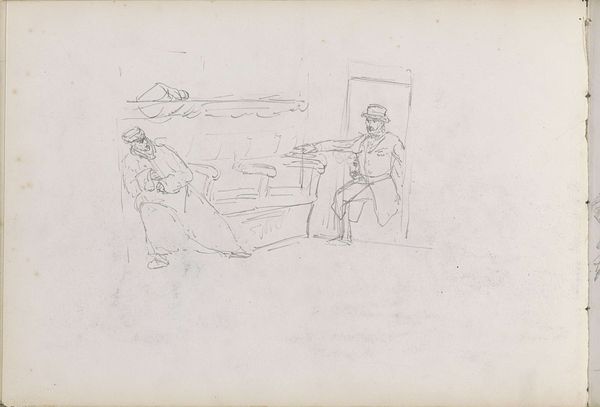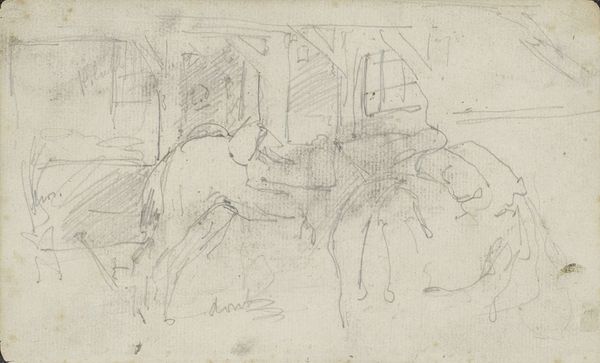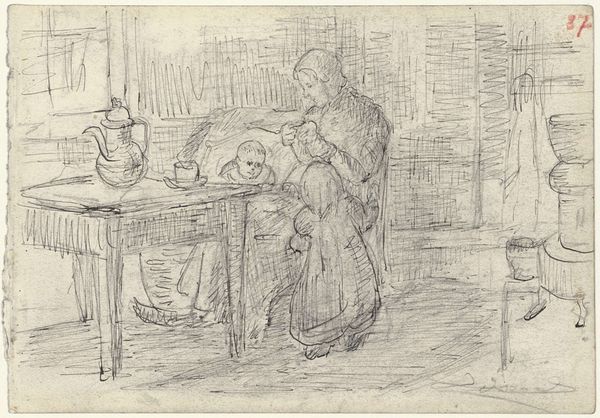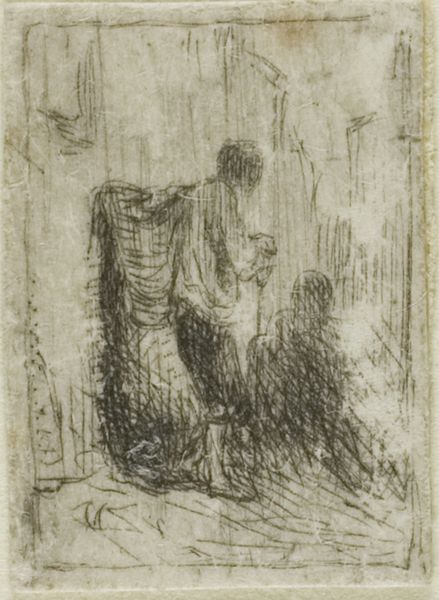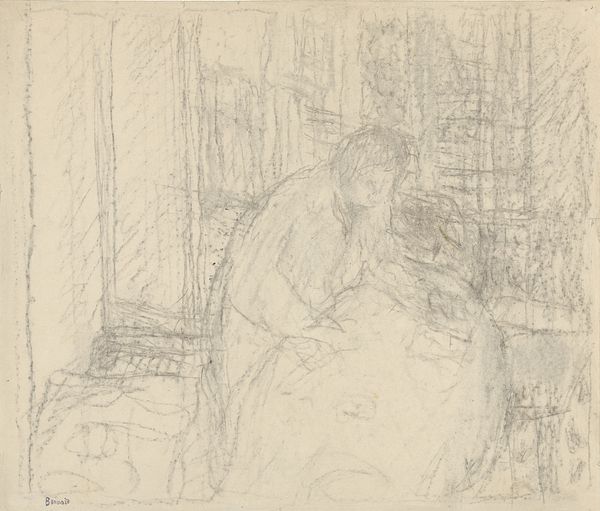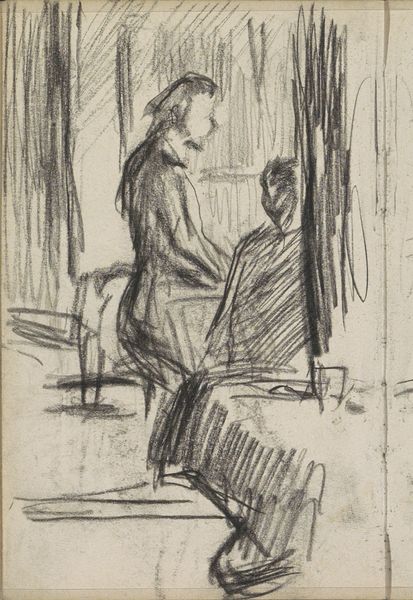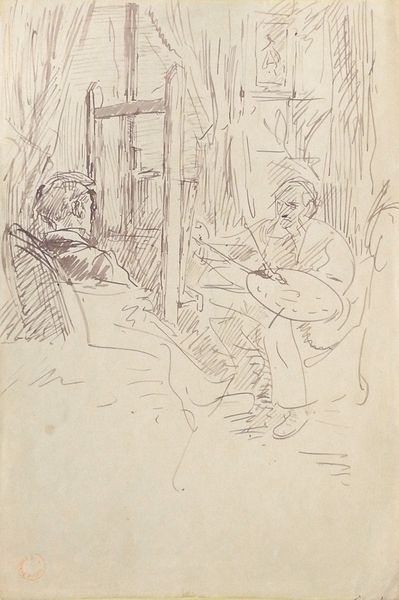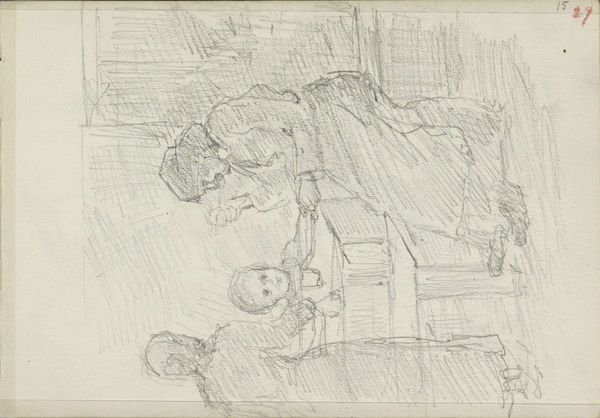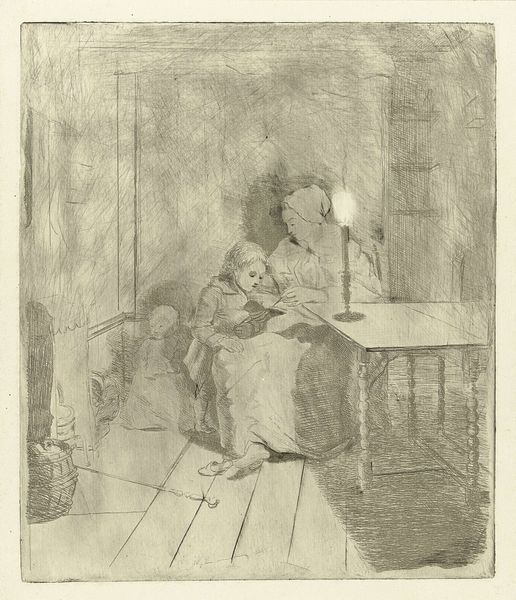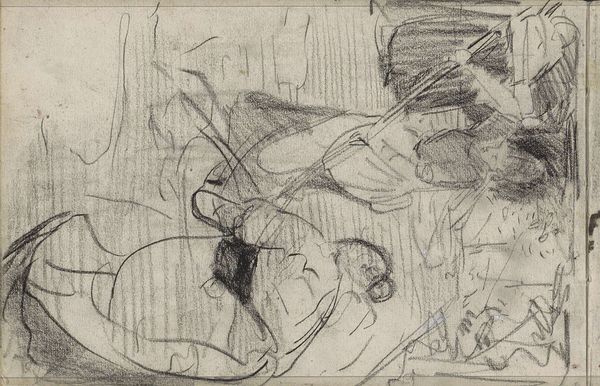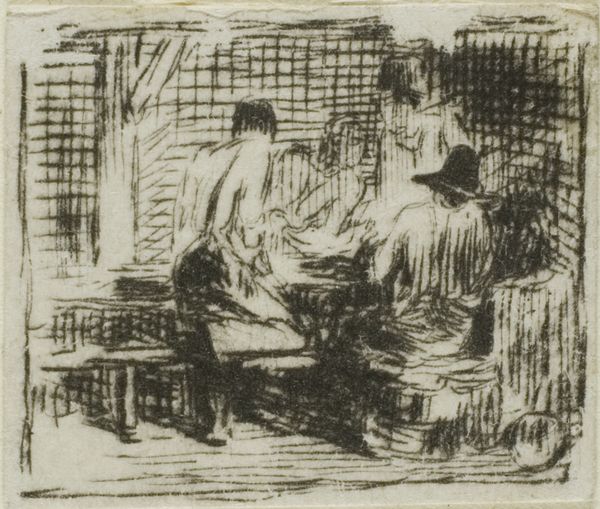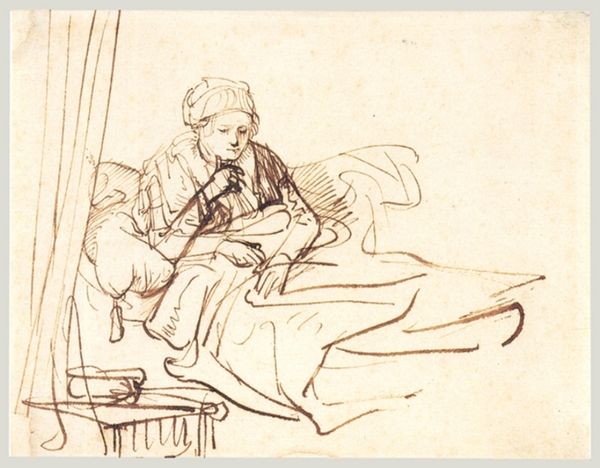
Copyright: Rijks Museum: Open Domain
Jozef Israëls created this drawing of two sitting women and a man in a covered wagon using graphite on paper. The softness of the graphite allows for blending, creating tonal variations that suggest light and shadow, enhancing the overall atmospheric effect of the artwork. The sketch-like quality of the drawing, with its visible lines and unfinished areas, emphasizes the immediacy of the creative process. This directness reflects the artist's focus on capturing the essence of the scene, rather than aiming for meticulous detail. The use of graphite, a readily available material, further connects the work to everyday life and the working class, hinting at themes of labor and transportation. By using such modest materials, Israëls elevates the ordinary, challenging traditional distinctions between high art and craft. The labor involved in even a simple drawing like this highlights the artist's skill and the value of his creative work. Appreciating the materials, processes, and social context is crucial for fully grasping this artwork's significance.
Comments
No comments
Be the first to comment and join the conversation on the ultimate creative platform.
